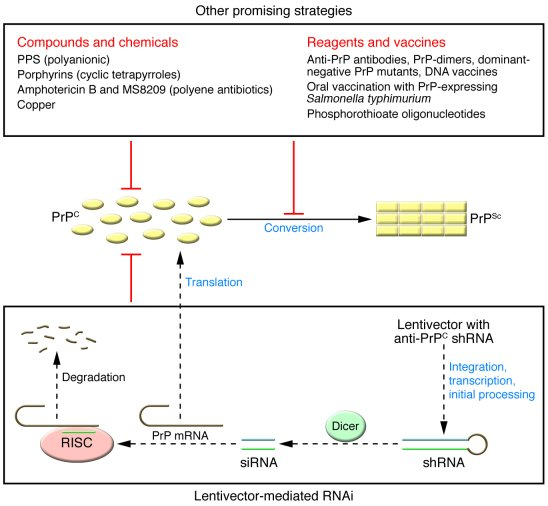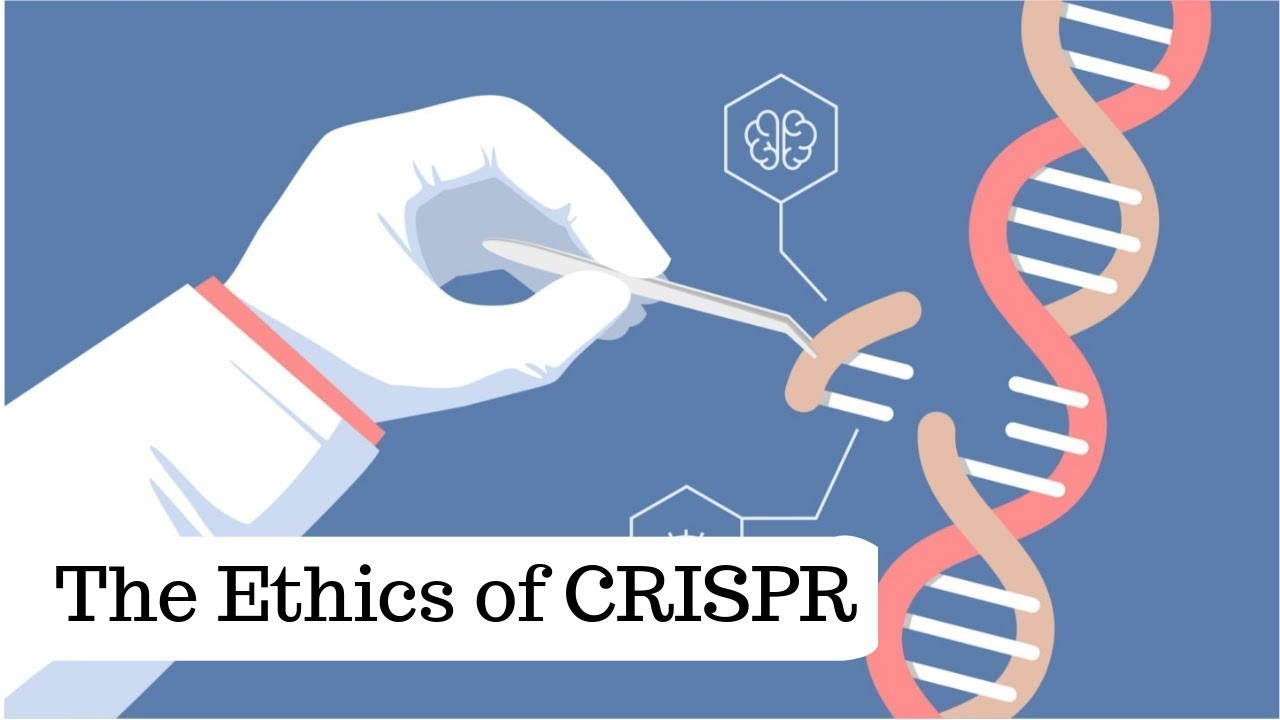Prion disease treatment is rapidly evolving, offering new hope for individuals afflicted by these rare but deadly disorders. These conditions, including Creutzfeldt-Jakob disease and fatal familial insomnia, are linked to the catastrophic misfolding of proteins in the brain, leading to severe neurological decline and death. Groundbreaking research from the Broad Institute has unveiled a promising gene-editing therapy that tackles the root cause of prion diseases by altering the very genetic code that produces these harmful proteins. With the potential to reduce protein levels by as much as 50% in mouse models, this innovative approach could significantly extend survival and quality of life for patients facing these daunting diagnoses. Though the path to human trials is lengthy, the progress made thus far suggests a future where effective treatment options may become a reality for countless affected families.
When discussing treatments for prion disorders, it is essential to consider terms like neurodegenerative diseases and protein misfolding syndromes, which encompass a range of conditions caused by dysfunctional proteins in the brain. Research teams are now investigating advanced therapeutic strategies, such as cutting-edge gene manipulation and base editing, aiming to halt the progression of diseases like fatal familial insomnia. The collaboration at the Broad Institute exemplifies a new wave of scientific inquiry that combines patient perspectives with cutting-edge research methods. This fusion between personal experience and scientific innovation is crucial, as many researchers, like Sonia Vallabh and Eric Minikel, are driven by their own encounters with these life-altering conditions. Their efforts, supported by extensive research into gene-editing techniques, herald a promising new era in the quest for effective therapies against prion diseases.
Understanding Prion Diseases and Their Impact
Prion diseases are a group of neurodegenerative disorders that lead to progressive brain damage and ultimately dementia. These conditions, including Creutzfeldt-Jakob disease, fatal familial insomnia, and Gerstmann-Sträussler-Scheinker disease, are characterized by the accumulation of misfolded proteins in the brain. The reporting of these conditions is alarming due to their invariably fatal nature. About 15% of these cases arise from inherited mutations in the prion protein gene, while the remaining are sporadic, resulting from unpredictable misfolding events. This understanding of prion diseases is vital for developing effective therapies and gene-editing interventions for affected patients.
Recent advancements have increased awareness and research into prion diseases, emphasizing the need for targeted therapeutic approaches. Researchers, such as those at the Broad Institute, are now focused on the mechanistic understanding of protein misfolding, supporting the hypothesis that interventions can mitigate the progression of these diseases. Clinical symptoms manifest gradually but become severe over time, highlighting the urgent need for timely and effective treatment options. The emotional and physical toll on families affected by these conditions underscores the importance of research that could potentially lead to breakthroughs in gene-editing therapy.
Milestone Advancements in Prion Disease Treatment
Recent studies have unveiled promising strategies for the treatment of prion diseases, particularly through gene-editing therapies. Researchers at the Broad Institute demonstrated significant progress by altering a single base in the gene responsible for producing harmful protein variations, leading to a remarkable 52% increase in the lifespan of laboratory mice. These results signal a potential turning point in prion disease treatment, providing hope for future clinical applications. However, the researchers caution that while this represents a significant milestone, numerous steps remain before human trials can commence.
The gene-editing technology pioneered by David Liu’s lab offers a novel approach to tackle the complex nature of prion diseases. By leveraging techniques developed for other conditions, the team is poised to adapt these innovations specifically for prions, which have historically been challenging to address. The ability to effectively reduce the production of harmful proteins highlights the therapeutic potential of gene-editing therapy, which may eventually inform treatment strategies for patients suffering from conditions such as fatal familial insomnia and other prion diseases.
The Role of Patient-Scientists in Prion Research
The involvement of patient-scientists in prion research adds a poignant dimension to the pursuit of effective therapies. For Sonia Vallabh, who has a personal stake in the development of prion disease treatments due to her diagnosis of fatal familial insomnia, the urgency and passion behind the research are amplified. Vallabh and her husband, Eric Minikel, have dedicated their careers to understanding prion diseases, bringing their unique perspectives as both researchers and individuals touched by this devastating disorder. Their commitment highlights the profound drive that personal experience can contribute to scientific inquiry.
This personal connection shared by researchers within this field often translates into a collaborative atmosphere that fosters innovation and determination. The synergy between laboratory techniques and patient perspectives creates a compelling narrative that can propel research forward quickly. Researchers like Vallabh and Minikel work closely with experts in vector engineering and gene-editing technologies to refine their approaches and push the boundaries of what is possible in prion disease treatment.
Future Directions of Prion Disease Treatment Research
Looking ahead, the future of prion disease treatment research holds immense promise, although several challenges must be addressed before viable therapies reach patients. The current focus on refining gene-editing techniques will be critical, as researchers aim to enhance the targeting and efficiency of these interventions while minimizing adverse effects. Safety remains a paramount concern, particularly given the infectious nature of prions and the possible complications arising from viral delivery methods used in gene therapy. Building on the foundational research from the Broad Institute will be essential in overcoming these hurdles.
Clinical trials are still several years away, but the optimism surrounding ongoing research is tangible. Enhanced collaboration among various research entities, as seen in the partnerships cultivated at the Broad Institute, will continue to play a vital role in transforming laboratory findings into human therapies. By focusing on innovative approaches like gene-editing therapy and capitalizing on breakthroughs in related fields, researchers are laying the groundwork for advancements that could change the lives of patients afflicted with prion diseases.
The Genetic Basis of Prion Diseases
At the core of prion diseases lies a genetic mechanism that significantly influences their development and progression. Approximately 15% of prion disease cases derive from inherited mutations in the prion protein gene (PRNP), which can destabilize protein folding, leading to the formation of neurotoxic aggregates. Understanding the genetic underpinnings of these disorders has opened avenues for targeted gene-editing therapies that aim to modify or correct these mutations. This genetic research is crucial for developing comprehensive strategies to combat prion diseases and improve patient outcomes.
Moreover, ongoing research emphasizes the role of sporadic cases—those that arise without known genetic mutations—attributing these occurrences to random protein misfolding events. The distinction between inherited and sporadic cases underlines the complex nature of prion diseases, making it essential for researchers to adopt versatile approaches, such as gene-editing therapy combined with structural biology, to unravel the intricacies involved in protein misfolding. As scientists strive to link genetic insights with therapeutic developments, the potential for effective treatments continues to grow.
Challenges in Prion Disease Research
Researching prion diseases presents unique challenges, particularly due to their elusive biological nature and the complexities of protein misfolding. The highly infectious and pathological nature of prions necessitates rigorous safety protocols, as seen in the cautious approach following past incidents of exposure. There needs to be strict regulations and comprehensive understanding of the risks involved when handling prion-infected materials. These challenges can slow down the pace of research and necessitate creativity in study design, particularly for emerging therapies such as gene editing.
In addition to safety concerns, the intricacies of translating laboratory successes into human applications pose further obstacles. As prion diseases are relatively rare, funding and resource allocation can become constrained, leading to slower progress in trial phases. Researchers must thus engage in robust advocacy for increased funding and public awareness to facilitate a comprehensive understanding of prion diseases. By cutting through these challenges collectively, the scientific community aims to accelerate advancements toward effective treatments and potentially cures.
Collaborative Efforts in Research
The collaborative spirit evident within prion disease research has been instrumental in advancing our understanding and developing innovative treatment strategies. As seen through the partnerships at the Broad Institute, interdisciplinary collaboration fosters an environment where diverse expertise converges to tackle complex challenges posed by prion diseases. By integrating disciplines such as neurology, genetics, and bioengineering, these teams can exchange ideas, refine techniques, and create synergistic pathways that enhance the efficacy of research efforts.
Moreover, these collaborative networks also extend into patient advocacy and community engagement, providing researchers with critical insights into the lived experience of individuals affected by prion diseases. This personal connection adds depth to the scientific inquiry, driving home the urgency of the mission to seek viable treatments. As collaborations continue to enhance the pace of breakthroughs, the ultimate goal remains clear: to develop effective, safe therapies that can radically improve the lives of those afflicted with prion diseases.
Impact of Broad Institute Research on Prion Disease Treatment
The Broad Institute has significantly influenced the landscape of prion disease treatment research through its pioneering work in gene-editing technologies. By focusing on techniques such as single base editing, researchers have made strides in disrupting the harmful protein production that characterizes prion disorders. This commitment to cutting-edge research not only enhances our understanding of prion biology but also paves the way for clinical applications that could transform treatment paradigms for patients suffering from these diseases.
The institute’s focus on collaboration and cutting-edge research methodologies underscores its role in defining the future of prion disease treatment. By leveraging facilities and expertise, researchers at the Broad Institute can rapidly iterate on new ideas and technologies. As measurable outcomes continue to emerge from ongoing studies, their findings contribute to a growing body of knowledge that informs both the scientific community and the public about potential advancements in prion disease therapies.
Stories of Hope and Resilience Among Lifelong Researchers
The narratives of researchers like Sonia Vallabh and Eric Minikel bring a heartfelt dimension to the field of prion disease treatment. Their personal journeys are characterized by hope and resilience, catalyzing their drive to innovate and discover potential therapies. Vallabh’s experience with fatal familial insomnia instilled a deep commitment to finding solutions for herself and others, emphasizing the interconnectedness of personal challenges and scientific inquiry. Their story serves as an inspiration not only to fellow researchers but also to patients and families facing similar battles.
Moreover, the combination of personal experience with rigorous scientific inquiry illustrates how the pursuit of knowledge can be fueled by empathy and the desire for tangible change. As Vallabh and Minikel continue to lead their research initiatives, they embody the vision of patient scientists who are ardently committed to bridging the divide between laboratory discoveries and meaningful patient outcomes. Their resilience reassures those affected by prion diseases that advancements in treatment are not only possible but achievable.
Frequently Asked Questions
What is the latest research on prion disease treatment involving gene-editing therapy?
Recent research published in Nature Medicine highlighted a promising gene-editing therapy aimed at treating prion disease. This study demonstrated that altering a single base in the gene responsible for producing harmful prion proteins can significantly reduce their levels in the brain. The findings showed a 52% increase in lifespan in laboratory mice, marking a significant milestone in developing effective treatments for conditions like Creutzfeldt-Jakob disease and fatal familial insomnia.
How could gene-editing therapy impact the treatment of conditions like Creutzfeldt-Jakob disease and fatal familial insomnia?
Gene-editing therapy holds great potential for treating prion diseases such as Creutzfeldt-Jakob disease and fatal familial insomnia by targeting the misfolded proteins responsible for brain damage. The recent trials at the Broad Institute show that modifying genetic sequences can reduce the toxic proteins by half, which is crucial for developing long-term treatments for these fatal conditions.
What are prion diseases and how do they relate to protein misfolding?
Prion diseases are a group of rare, invariably fatal disorders caused by the misfolding of proteins, particularly prion proteins in the brain. This misfolding leads to brain damage and debilitating conditions such as Creutzfeldt-Jakob disease and fatal familial insomnia. Understanding protein misfolding is essential for developing effective treatments, including potential gene-editing therapies.
What steps remain before gene-editing therapy for prion disease can be tested in humans?
Before gene-editing therapy can be tested on humans, several critical steps need to be completed. Researchers must refine the base editor technology to ensure it is small enough for effective delivery, improve targeting techniques to minimize integration into unintended tissue types, and enhance the efficiency of reducing prion protein production. Although promising, human trials for treatments derived from this research are estimated to be several years away.
Who is behind the recent advancements in gene-editing therapy for prion diseases?
The recent advancements in gene-editing therapy for prion diseases come from a collaboration between researchers at the Broad Institute of MIT and Harvard, including David Liu and patient-scientists Sonia Vallabh and Eric Minikel. Their combined efforts aim to enhance understanding and develop effective treatments for prion diseases, showcasing a personal commitment to addressing these rare conditions.
What role does the Broad Institute play in prion disease research and treatment development?
The Broad Institute plays a pivotal role in prion disease research by conducting groundbreaking studies, such as the recent gene-editing therapy research, which targets harmful prion protein production. Their multidisciplinary approach brings together experts in gene editing, vector engineering, and patient advocacy, significantly contributing to the understanding and potential treatment options for conditions like Creutzfeldt-Jakob disease and fatal familial insomnia.
What implications do the findings on gene editing have for the future of prion disease treatment?
The findings on gene editing represent a significant leap forward in the future of prion disease treatment. They suggest that by effectively altering gene sequences associated with prion protein production, we may be able to mitigate or even reverse the neurological damage caused by conditions like Creutzfeldt-Jakob disease. As this research progresses, it instills hope for a potential cure or effective management strategies for these otherwise invariably fatal disorders.
| Key Point | Details |
|---|---|
| Prion Diseases | Rare, fatal disorders caused by misfolded proteins in the brain. |
| Gene Editing Progress | Research shows altering a single base in a gene can reduce harmful proteins in mice, increasing their lifespans by 52%. |
| Human Trials Timeline | Investigational steps are necessary before reaching clinical trials for humans. |
| Motivations of Researchers | Sonia Vallabh’s personal connection to prion disease fuels the urgency and dedication of the research. |
| Innovative Techniques | The research employs a single base editing technology developed at the Broad Institute. |
| Safety Adjustments | Researchers modified their approach to enhance safety while still significantly reducing prion protein production. |
| Collaboration and Community | Frequent collaboration between researchers exemplifies a shared goal and personal motivation. |
Summary
Prion disease treatment has made significant strides with recent gene editing research, marking a promising step towards potential therapies. Researchers at the Broad Institute have shown that manipulating genes can effectively decrease harmful proteins linked to prion diseases, increasing the lifespan of laboratory mice. While human trials are still years away, the dedication and personal connections of researchers like Sonia Vallabh are driving this transformative work forward, offering hope for those affected by these devastating conditions.



